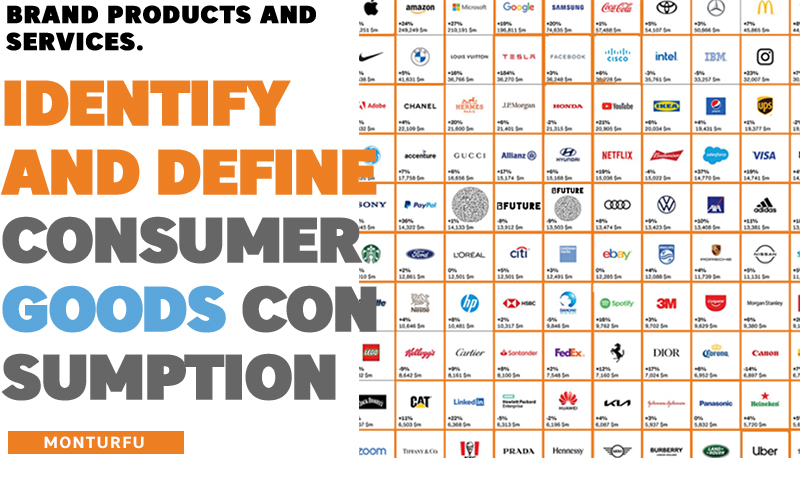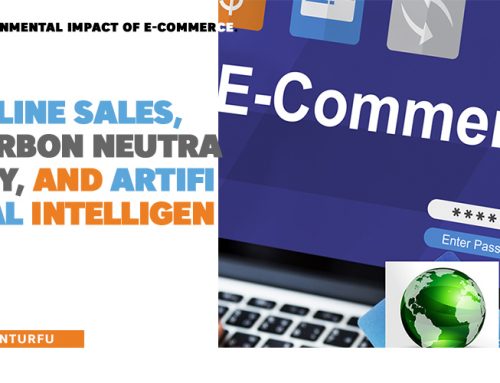BRAND PRODUCTS AND SERVICES.
IDENTIFY AND DEFINE
CONSUMER
GOODS CONSUMPTION
Since the exchange of products between women and men has been taking place, more and more goods are being traded in ever greater proportions and varieties. Thus the need to identify and categorize these different goods and services to structure and organize trade around these products.
The brand the products and services.
Moreover, with the globalization of exchanges and the exponential multiplication of exchange resources, the notion of brand is imposed as the only alternative to the unique identification of each product and service. From then on, we can apprehend the brand in its legal, marketing and economic dimensions.
The brand in its marketing and economic context.
The brand measures and synthesizes a marketing function attached to a product or service. Thus, the value of a brand, i.e. its power to unite customers, and its ability to evoke quality and reputation are all part of its brand image. So much so that today, it is one of the key assets for a company.
The brand banishes inaccuracies and removes confusion.
The brand is therefore a value asset. It is the direct element that guides the consumer’s decision making. The latter can then distinguish exactly and clearly choose such product or such other service according to the image he has of the brand. Ultimately, the brand serves economically both to individualize a product or service and to name it.
The brand, the products and services : the values.
Intrinsically, a brand is structured around values. In general, it is based on a predominant value and is supported by 2 or 3 secondary values. Obviously, nothing is fixed in this process. And so, all brands evolve with and over time according to their experiences and their development environments.
To fix the ideas even more, let us evoke upstream the work of the researcher in psychology, Shalom Schwartz who identifies 10 basic and universal values :
- Autonomy
- Stimulation
- Hedonism
- Success
- Power
- Security
- Compliance
- Tradition
- Benevolence
- Universalism.
The importance of the choice of the sign.
An exponential number of brand choices are available to consumers these days. Thus, to stand out from the competition is often a daunting task. Because doing a market study, another marketing study, surveying consumers and identifying a problem to which a solution is provided through the brand is expensive.
Time is money.
Even if, in the end, everything is integrated into an investment process insofar as we have a solution that is more or less unprecedented in its application.
A good product can fail commercially because the brand or the advertising is not very good. The right choice of sign, on the other hand, capitalizes on this whole process because the right product actually meets its own clientele.
The brand the products and services : the license.
For x or y reasons, one can grant a license of its trademark to a third party. The latter then has the possibility to exploit the sign for all or part of the goods and services covered by the trademark registration…
The brand the products and services: the assignment.
One can also give up one’s trademark totally or partially. The same logic prevails in this context. A trademark can only be assigned for products and/or services that are explicitly mentioned in the application.
Moreover, the trademark has a patrimonial value. It can therefore serve as a guarantee. One can then effectively pledge one’s trademark.
Effectiveness of the brand and its control : la cession.
On peut aussi céder sa marque totalement ou partiellement. La même logique prévaut de même dans ce cadre. En cela qu’on ne peu céder une marque que pour des produits et ou services qui apparaissent explicitement dans le dépôt.
La marque a au surplus une valeur patrimoniale. Elle peut donc servir de garantie. On peut alors effectivement mettre sa marque en gage.
Effectiveness of the brand and its control.
The right allows to acquire a monopoly of exploitation of the chosen sign. Nevertheless, this monopoly is justified by the full use of the sign. The owner of the trademark must work against any misuse of the sign by a third party. On the other hand, the owner of the sign must ensure that a third party does not register a similar or identical trademark for goods or services that are also identical or similar.
The owner of a trademark harms his own sign.
By not acting, the owner of a trademark harms his trademark when he does not react to its infringement or does not actually use his trademark.
On the other hand, the revocation action withdraws from the owner of a trademark, under certain conditions, the rights derived from the registration of the sign. It is therefore a sanction for failure to exploit.
And finally, when the owner of a trademark knowingly tolerates that a third party uses his sign for 5 years, he can no longer act in infringement or nullity.
A third party infringes a trademark.
The owner of a trademark who believes that it has been infringed has the choice between criminal and civil action.
The brand, the products and services: the civil liability.
This paragraph often refers to the term unfair competition, which is very closely linked to intellectual property law.
Confusion.
Thus, we have the confusion. It is indeed an act of unfair competition which consists for a company to take advantage in an illegitimate way of the reputation of its competitors by creating in the mind of the customers an assimilation or a similarity between them.
Denigration.
Then we can mention the denigration. Here the competitor spreads pejorative and malicious information to discredit certain products or services.
Parasitism.
Finally, parasitism is a practice whose purpose is to follow in the footsteps of a company and unduly benefit from the investments made and its reputation.
Trial solutions.
Consequently, the court condemns the third party responsible for acts of unfair competition to compensate the entire damage resulting from these acts.
Trademarks, products and services : industrial property.
As a rule, there is no certainty in industrial property matters. On the one hand, good faith is of little importance. And on the other hand, the justice punishes the infringer even if he is in good faith. So each action has its own particularity. However, some arguments are useless.
Amicable solutions.
The different parties agree on a collaborative coexistence. Each party delimits its field of activity and commits itself not to impede the other by encroachment.
The entente cordiale.
And for a better living together, the parties grant each other licenses to allow each party to flourish.
The brand in the 21st century.
Today, the brand takes precedence over the product because the consumer pays for the brand before the product. Thus we are witnessing the demonstration of the marketing and economic power of the brand. It is the brand that nowadays influences and directs goods and services. And it is still the brand that positions their images in the representations of mental notoriety of the different economic actors.
The brand products and services : a real phenomenon of society.
The brand is becoming a real cultural and social phenomenon. A recent study shows that the French surf on more than a hundred advertising messages per day. Television, radio, billboards, mailboxes and the Internet are all sources of this permanent solicitation.
Trademarks, products and services : the entry point of the company.
The brand therefore currently covers multiple facets. It is the brand that federates the clientele by playing its role as a guarantee of quality. It is totally communal when it bears the sign of belonging to a social group. Moreover, some products are nowadays very successful only because they are branded X, Y or Z.
Trademark registration.
The filing of a trademark for France is done either at the INPI, National Institute of Industrial Property, or at the clerk’s office of the Commercial Court, which transmits the application to the INPI.
This filing must contain the identification of the applicant, the representation of the trademark with possibly a brief description and the enumeration of the list of goods and services to which the applicant intends to apply his trademark. It is therefore imperative to know before filing what are the products and services on which one is positioned and that one wishes to apply its trademark.
Define and identify a brand legally.
According to article L711-1 of the Intellectual Property Code, a trademark is a sign that can be represented graphically to distinguish the goods or services of a natural or legal person.
Composition of a brand.
To say that a trademark is a sign covers different aspects. It can be an acronym, a slogan, a sentence, a neologism, a word, a letter or a number. It can also be a drawing, a logo, a hologram, a characteristic color or a sound signal.
However, the Intellectual Property Code imposes a graphic representation of the trademark for reasons of legal protection. The field of exceptions to this rule covers smells because they are difficult to represent due to their chemical composition.
The legal monopoly of the holder.
It is also clear that it is necessary to characterize the goods and services that are the object of protection. Since the legal protection covers the goods and services present in the application and not beyond.
Moreover, this clarity gives the owner the legal monopoly and the primacy of the exploitation of the trademark. And in any case, no modification is possible in terms of trademark rights.
To conclude ; we report to talk in our next articles about branding strategies, personal, product, service, business, corporate branding etc., inbound marketing, content marketing, paradigm shifts, the advent of influencers, the development of advertising on Instagram etc…
Ok de-MEDEIROS
SOURCES : https://www.petite-entreprise.net/P-2796-136-G1-definition-qu-est-ce-qu-une-marque.html, https://www.marketing-etudiant.fr/cours/m/qu-est-ce-qu-une-marque.php, https://www.insee.fr/fr/metadonnees/definition/c1141, https://infonet.fr/lexique/definitions/marque/, https://www.agence-eliette.fr/strategie-de-marque/pourquoi-deployer-une-strategie-de-marque/fonctions-de-la-marque-et-reconnaissance-de-marque, https://www.maxicours.com/se/cours/la-marque/, https://icicestbranding.fr/2018/11/13/5-caracteristiques-qui-forgent-les-grandes-marques/, https://www.inpi.fr/fr/comprendre-la-propriete-intellectuelle/la-marque/les-differents-types-de-marque, https://www.gouache.fr/articles/Articles/droit-avocat/marques-signes-distinctifs-capital-immateriel/Depot-de-marque/Marque-verbale-quelle-consequence-sur-la-protection, https://blog.comexplorer.com/strategie-de-marque,






Laisser un commentaire